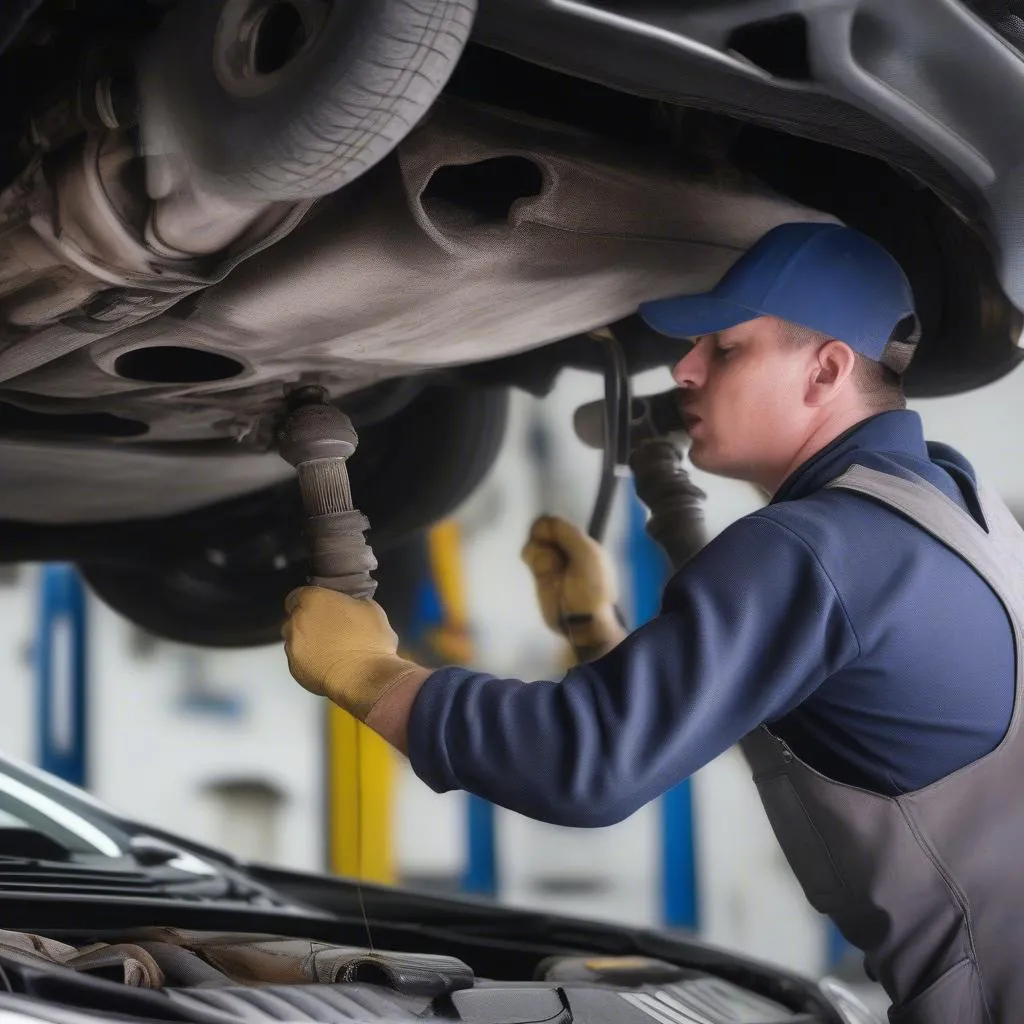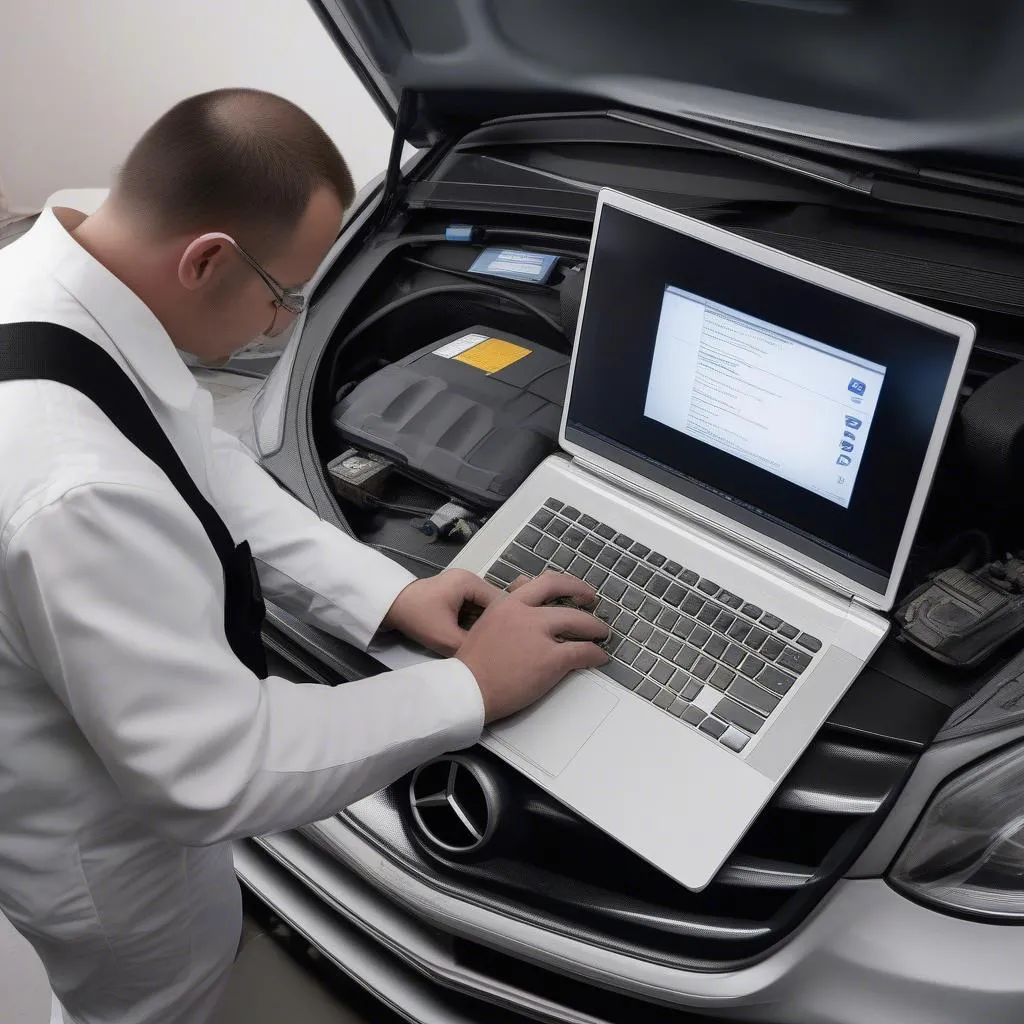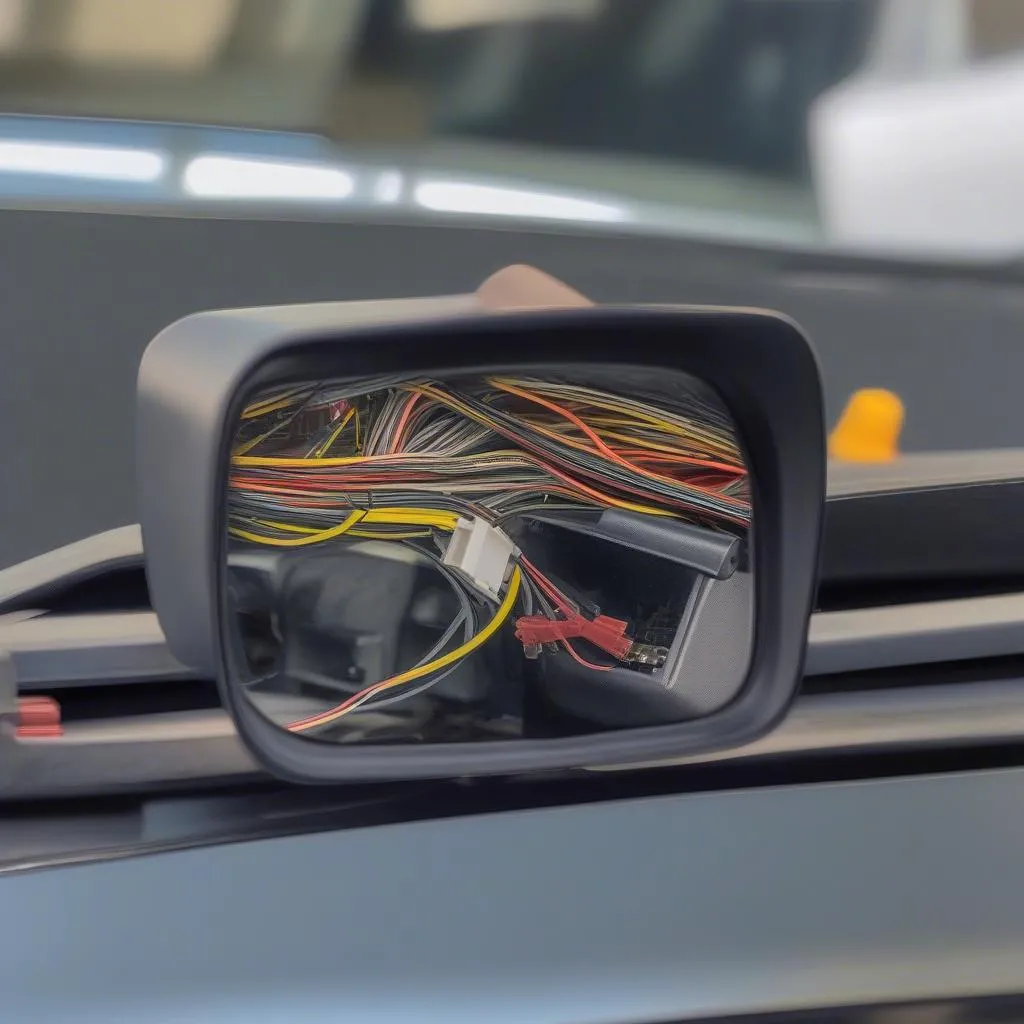Is your Mercedes E430 (2000) making a rattling sound from underneath? This could be a sign of a failing catalytic converter, a critical component of your car’s exhaust system. Ignoring this issue can lead to decreased engine performance, failed emissions tests, and even further damage to your vehicle. This guide will walk you through the common causes of a rattling catalytic converter in a 2000 Mercedes E430, how to diagnose the issue, and the steps involved in fixing it.
Understanding the Problem: Why Does My Catalytic Converter Rattle?
A catalytic converter’s job is to reduce harmful emissions from your engine. Inside the converter, a honeycomb structure coated with precious metals catalyzes a chemical reaction, converting toxic gases into less harmful ones. Over time, this honeycomb structure can break down, causing a rattling noise.
Here are the most common reasons for a rattling catalytic converter in a 2000 Mercedes E430:
- Internal Damage: The most frequent culprit is a damaged honeycomb structure inside the converter. This can be caused by:
- Wear and Tear: As your car ages, the constant heat and vibration can weaken the honeycomb structure, causing it to break down.
- Physical Impacts: Driving over potholes or speed bumps at high speeds can damage the catalytic converter.
- Engine Problems: Issues like misfires, running rich (too much fuel), or burning oil can lead to excessive heat in the exhaust system, damaging the converter.
- Loose Heat Shield: The catalytic converter has a heat shield to protect other components from the high temperatures it generates. If this shield becomes loose or damaged, it can rattle against the converter.
Diagnosing the Rattle
Before you start any repairs, confirm that the catalytic converter is the source of the rattle. Here’s how:
- Listen Carefully: The rattle is usually more pronounced during acceleration and deceleration. Have someone rev the engine while you listen near the catalytic converter (located underneath the car near the engine).
- Visual Inspection: Carefully inspect the catalytic converter and the surrounding heat shield for any signs of damage, rust, or looseness.
- Professional Diagnosis: For a definitive diagnosis, take your Mercedes E430 to a trusted mechanic or a specialized exhaust shop. They can use a stethoscope or other tools to pinpoint the source of the noise.
Tools and Parts You’ll Need for the Fix
The exact tools and parts will depend on the specific issue with your catalytic converter. Here’s a general list:
- Jack and Jack Stands: To safely work under the vehicle.
- Wrench Set: To loosen and tighten bolts.
- Socket Set: For removing and installing the oxygen sensors.
- Penetrating Oil: To loosen rusted bolts.
- Replacement Catalytic Converter (if necessary): Choose a high-quality converter that meets the specifications of your Mercedes E430.
- Replacement Heat Shield (if necessary): Ensure it’s the correct fit for your model.
Fixing the Catalytic Converter Rattle
Important: Working on exhaust systems can be dangerous due to heat and sharp edges. If you’re not comfortable working under your car, it’s best to leave the repairs to a professional.
If the rattle is due to a loose heat shield:
- Securely lift your vehicle using the jack and jack stands.
- Locate the loose heat shield and tighten any loose bolts. If the shield is damaged, you’ll need to replace it.
If the catalytic converter itself is damaged:
- Replacing the catalytic converter is often the best solution. It’s typically more cost-effective than repairing a damaged one.
- Follow the instructions provided with your new catalytic converter. You’ll need to remove the old converter, install the new one, and reconnect the oxygen sensors.
After the Repair:
- Check for Leaks: After completing the repair, start your engine and check for any exhaust leaks around the catalytic converter.
- Clear Codes (if any): If your check engine light was on due to the catalytic converter issue, have the codes cleared using an OBD-II scanner.
 Mercedes E430 Catalytic Converter Replacement
Mercedes E430 Catalytic Converter Replacement
Frequently Asked Questions
Q: Can I drive my Mercedes E430 with a rattling catalytic converter?
A: It’s not advisable to drive with a rattling catalytic converter for extended periods. The problem could worsen, leading to more serious damage and potentially leaving you stranded.
Q: How long does a catalytic converter last?
A: Catalytic converters are designed to last for the lifetime of the vehicle, but several factors can shorten their lifespan, including:
- Poor engine maintenance
- Frequent short trips
- Driving habits
Q: Can I prevent catalytic converter failure?
A: While not entirely preventable, regular vehicle maintenance, addressing engine problems promptly, and avoiding harsh driving conditions can significantly extend the life of your catalytic converter.
Q: How can I be sure if my catalytic converter is failing?
A: Aside from a rattling sound, other symptoms of a failing catalytic converter can include:
- Decreased engine performance
- Reduced fuel efficiency
- The smell of sulfur or rotten eggs from the exhaust
- Check engine light illuminated
A professional mechanic, potentially aided by diagnostic software like those offered by CARDIAGTECH, can accurately diagnose a failing catalytic converter.
 Car Diagnostic Software in Use
Car Diagnostic Software in Use
Conclusion
Addressing a rattling catalytic converter in your 2000 Mercedes E430 is crucial to maintain your car’s performance, pass emissions tests, and avoid potential hazards. While a loose heat shield is a relatively easy fix, internal damage to the converter usually necessitates a replacement. If you’re unsure about tackling this repair yourself, don’t hesitate to seek help from a qualified mechanic.


